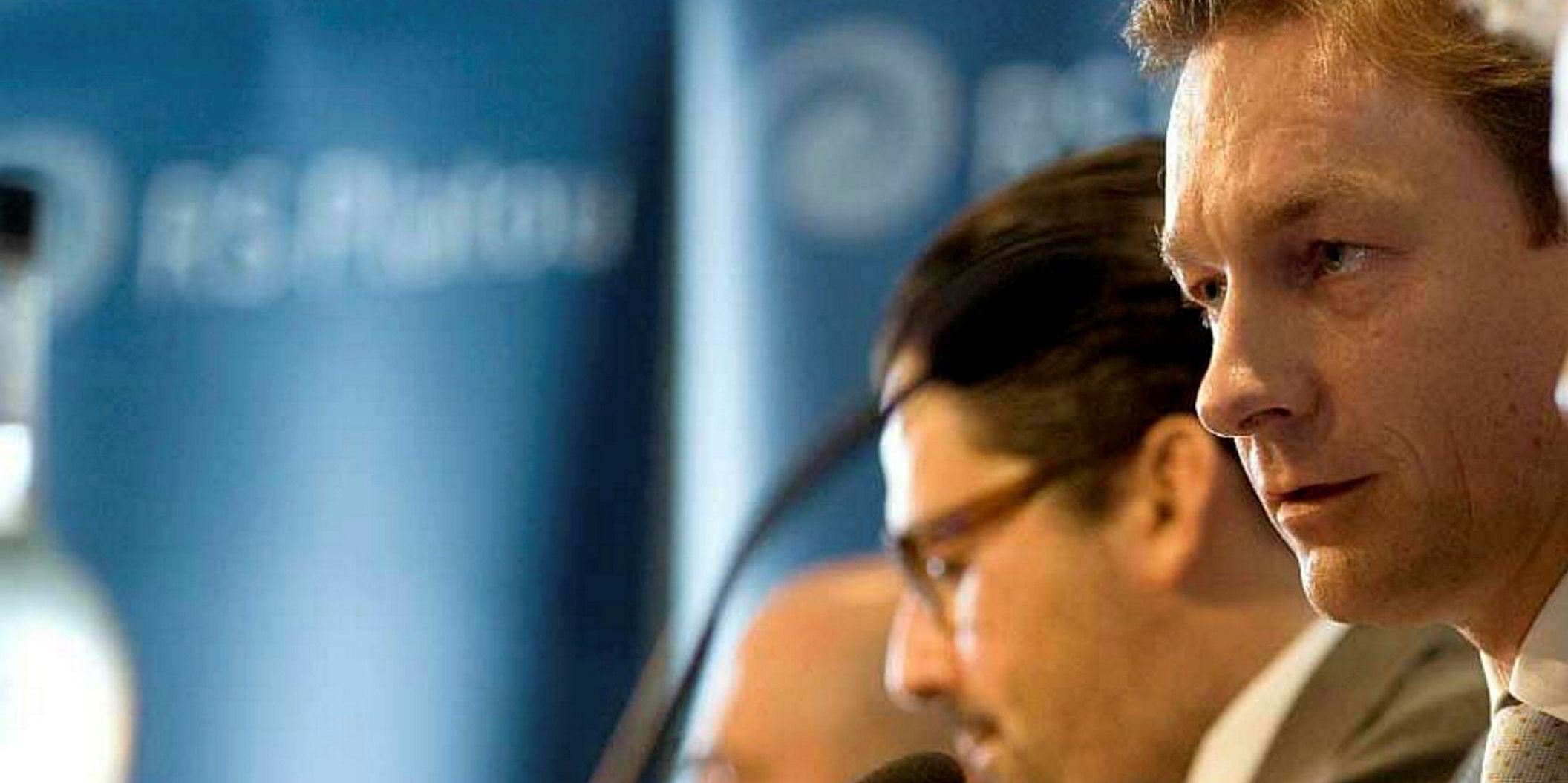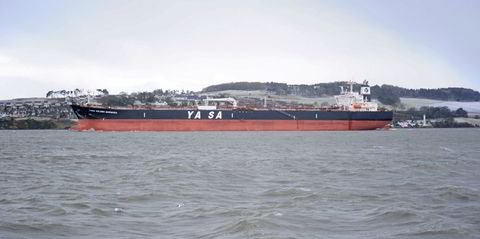Don’t worry, be happy.
That in essence was the message from three top public tanker executives to investors on Wednesday during a conference call hosted by Clarksons Platou Securities.
But the investors? They worried, as they were selling off tanker shares in big numbers during the morning trading session in New York, apparently on firming oil prices. Those losses held for the full trading day in a rough patch for the group.
Executives of three major tanker owners — Euronav chief executive Hugo De Stoop, DHT Holdings co-chief executive Svein Moxnes Harfjeld and Scorpio Group president Robert Bugbee — suggested that investors should be keeping their eyes on the bigger picture rather than fixating on daily fluctuations in spot rates.
Spot rates fall
As Clarksons Platou Securities analyst Omar Nokta pointed out, headline spot rates have fallen off some in the past couple of days, but from near-record highs.
Perspective is needed, the tanker managers said.
“When you see $200,000 a day for a VLCC, it’s probably for one or two ships — we can’t say the averages we will publish [in earnings reports] will reflect those peaks we have seen,” De Stoop said in response to a question from Nokta.
“But when I look at averages, the fourth quarter [2019] was good, the first quarter [2020] was better and the second quarter has been even better than that so far.
“The market’s going up, not down. We have a big smile on our face.”
Euronav owns a fleet of 48 VLCCs and 25 suezmaxes.
De Stoop drew agreement from Bugbee, who represents the world’s largest owner of clean-products tonnage.
Averages and outliers
“They are averages, and you can have outliers — don’t focus on the electrifying big fixture of the day,” Bugbee said.
“In fact, you can take off 20%, take off 25%, whatever number you like. They’re still huge numbers in terms of actual cash flow.”

Harfjeld added to the chorus, recalling that when VLCCs spiked briefly above $200,000 a day last autumn then dropped back, investors were sceptical the sector would be able to achieve even $60,000 per day in the fourth quarter.
Volatile business
“So now you have rates at $200,000 and maybe they fall to $140,000 and people think it’s the end. Rates will swing because it’s a volatile business. You shouldn’t be too worried because it goes down one week,” he cautioned.
DHT owns a fleet of 27 VLCCS.
Harfjeld said he would like investors to focus more on what the current bull market for tankers based on a world oil glut is doing for the balance sheets of public owners, which are adding cash reserves, reducing debt and throwing off dividends.
“We understand that investors get excited or scared based on what rates are doing on a given day, but we’d encourage them to look into the [profit and loss statements] of these companies,” he said.
“That’s really where the excitement should be.”
Investors were having other ideas on the day, however.
Harfjeld’s DHT stock closed down 10% in New York, with Euronav off 9% and Bugbee’s Scorpio Tankers bleeding 16%.
NAT reverses gains
However, they were not the worst, with Nordic American Tankers reversing some of its recent gains with a 14% drop. Another huge trading day of 57m shares this time took $1.6m off its market capitalisation.
Tsakos Energy Navigation was down 16% and Teekay Tankers slumped 16%.
Nokta said after the call that rising oil prices seemed to be the culprit.
“It seems that recently tanker stocks move opposite the direction of the oil price and oil curve, especially on days where there’s a major move,” Nokta said.
“So with Brent [crude futures] up over 10%, that seems to be the main reason from our perspective.”
BTIG analyst Greg Lewis made the same connection in a client note on Wednesday.
While a 22% daily drop in VLCC rates to $126,000 per day might be the more obvious reason, the flattening of the oil curve between one-month and six-month Brent futures appeared to be the real culprit, he said.
The spread dropped below $8, which is its lowest in three weeks. In April, that spread showed about an 80% correlation with share prices of Euronav and Frontline, while VLCC rates on the TD3 route reflected only a 10% correlation.
Still, investors are showing virtually unprecedented interest in tanker stocks based on floating storage opportunities and the current freight market.
Nokta said Wednesday’s call drew a record number of listeners, easily topping others connected with major events such as the Saudi Aramco oil complex attack, US sanctions against China’s Cosco and Saudi’s cut in oil prices.








